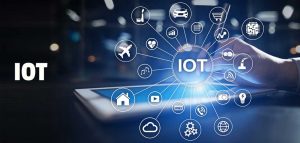The rapid population growth and increasing demand for food have made it imperative to improve the efficiency and sustainability of agricultural practices. The Internet of Things (IoT) has the potential to revolutionize the way we farm by providing farmers with real-time data and enabling them to make informed decisions. By connecting various sensors and devices, IoT can enable precision farming, which can lead to increased crop yields, reduced water consumption, and optimized use of fertilizers and pesticides. In this research, we will explore the various ways in which IoT can be used in smart farming and the potential benefits it can provide to farmers, the environment, and consumers. We will also examine the challenges and limitations of implementing IoT in agriculture, and suggest possible solutions.
Due to severe weather, peasants, unprepared seed sowing, uneven irrigation, and unpredicted locust assaults, crop output is a serious concern for farmers. Soil erosion, biodiversity loss, and increased demand for higher-quality food are all bigger issues for farmers. Such challenges frequently lead to farmers accepting less and losing hope for the future. As a result, farmers must use technology such as the Internet of Things to monitor their crops in real time and prioritise quality food production.

By 2025, the global IoT in agriculture market is expected to develop at a CAGR of 14.7 percent. As the world’s population grows, so does the need for food, necessitating the use of IoT technology in the food business for successful outcomes. The technology is a complete bundle that addresses all of the agriculture industry’s needs. It entails precise weather forecasting as well as real-time notifications so that farm managers are aware of what is happening in the fields even when they are not physically present. Other reasons to incorporate smart farming solutions in the agriculture industry include the fact that it is one of the finest ways for farmers to simplify and automate their operations. Here are the main reasons why smart farming is important.
What is a Smart Farming Solution and How Does It Help Manage Crop Health?
Smart farming is the consequence of combining IoT technologies with conventional agricultural principles. The technology era is allowing agriculture to modernise and adds to a completely modified process. Built-in sensors in an IoT-enabled smart farming solution capture data from fields, crops, and other farming assets. Crop health analysis, real-time field monitoring, weather predictions, smart pest management, and inventory analysis are just a few of the applications for which this data is useful.
What is the Process?
The smart farming system uses sensors to collect data, which is then transformed into user-friendly information, allowing farm managers to make faster and more informed choices about their operations. If a farm manager wishes to assign precise irrigation timings to his or her field, for example, the IoT solution simplifies threshold selection and automates the entire watering process until the parameters are modified. Apart from automating the watering process, managers may also monitor field operations in real time via a clear display on their linked devices.

The Advantages of Using the Smart Solution for Farm Remote Management
Farmers are looking for a better answer to their management challenges because their farms are in remote places. IoT technology enables farmers to control their fields remotely using smart devices, resulting in a smart farming solution. Furthermore, despite ill health, weather conditions, travel restrictions, or labour shortages, farm managers demand adequate view of their fields. Remote crop management enabled by smart technology ensures transparency and real-time crop monitoring, resulting in increased production.
Indigenous agricultural practises are used in many locations due to a lack of basic understanding among farmers. The agricultural state has grown increasingly vital in recent years, requiring complicated activities such as weather forecasting and soil quality testing. In such a setting, a new agricultural vision is required, one that includes real-time monitoring via sensors. Such gadgets play an important role in delivering precise data, which leads to increased agricultural output.
The Internet of Things is a data-driven technology that allows farm managers to keep a close eye on their crops using current approaches. It assists farmers in taking suitable pest control measures and protecting their crops from various illnesses. In addition, the smart farming system monitors every aspect of crop production, sending out quick notifications regarding its health, condition, and temperature requirements, as well as displaying all of the information on the linked smart devices.
The IoT-based sensors are installed underground to monitor soil quality and determine its suitability for various crops. This improves the way the farming industry operates by delivering the greatest options for achieving error-free output. As technology advances, a comprehensive package for analysis is available.
Soil Demand Analysis in Real Time
Precision technology for more sustainable and effective farming processes is provided through the Internet of Things. For farmers to develop quality crops, accurate soil data is one of the most significant tools. In addition, IoT provides farmers with enhanced seed planting techniques as well as valuable insights on the weather forecast, needed soil water content, optimal temperature, and humidity. All of this is done in real time and assessed to ensure that agricultural output is maintained.

IoT technology and linked devices are used in smart greenhouses to produce an autonomously controlled environment for agricultural production. Weather problems and the chance of predators trespassing in the fields are reduced in such an environment, ensuring that the crops are protected at all costs. Smart greenhouses have an automated feature.
With its capacity to deliver reliable data on crops, IoT technology is leading the way in the farming sector. By 2023, it is expected that over 12 million agricultural sensors would have been placed worldwide, implying that an average field might yield half a million data points every day. The Internet of Things will boost agricultural yields and profitability in the future of farming. Furthermore, the use of IoT technology allows farmers to reduce their labour through automated processing. IoT is mostly used in agriculture to evaluate and optimise large data, resulting in increased operational efficiency and lower labour costs.
In conclusion, smart farming with IoT has the potential to greatly improve the efficiency and sustainability of agricultural practices. By providing farmers with real-time data and enabling precision farming, IoT can increase crop yields, reduce water consumption, and optimize the use of fertilizers and pesticides. However, implementing IoT in agriculture also presents challenges such as cost, lack of standardization, and data privacy concerns. Despite these challenges, the benefits of IoT in agriculture make it a promising technology for the future of farming. Further research and development in this field can help overcome these challenges and pave the way for a more sustainable and efficient agriculture.
#IoT, #SmartFarming, #PrecisionAgriculture, #AgTech, #CropProduction, #LivestockProduction, #Efficiency, #Sustainability, #SensorTech, #DataAnalysis, #Automation, #RemoteMonitoring

